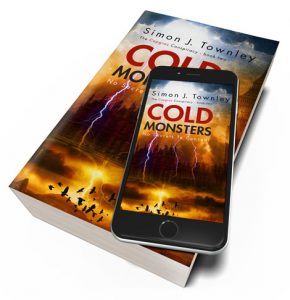(And the lesson you should have learnt from that class in high school all those years ago)
The one thing most people know about haiku concerns the verse form: three horizontal lines, 17 syllables in the format 5-7-5. And they think that’s set in stone, the one and only way. And they can be quite pedantic about it because, after all, that’s what their teacher taught them way back in fifth grade, or whenever.
The truth, as ever, is more complex. The format we use for haiku in English is a compromise and an accommodation to approximate the Japanese haiku and capture its spirit. But people who love haiku, read it, write it and translate it know the 5-7-5 edict is far from ideal, and many favour other forms, such as 4-6-4, 4-5-4, 3-4-3, 3-3-3, and even the radical and extreme 2-2-2.
Whatever format you favour, being overly fastidious and insisting your way is the ‘One True Way’ is always a mistake. So, first, some context.
First of all, haiku is an ancient verse form, and very traditional. It is closely linked to Zen Buddhism and many of its greatest exponents were Zen monks. Today in Japan many people write as we do, from left to right. But Haikus come from an age when generally people wrote vertically. This in itself is a huge simplification. There are three writing systems in Japan, and both horizontal and vertical writing have existed side by side, so the speak, for many years. However, it’s safe to say that most traditional Haikus were written on one vertical line.
In part that is possible because a page is taller than it is wide. So when we convert the form into horizontal script, we need line breaks. Everyone seems to agree that three lines is the best way to do it, and the traditional one line format does contain a 1-2-3 rhythm.
So, three vertical lines it is and most people agree, but already we can see it would be foolish to be too pedantic about the verse form.
The second thing to note is that in Japanese they don’t count syllables the way we do. In English we count each syllable to create the metre (‘meter’ if you’re American) – so a line may contain for example six, eight or ten syllables. Other languages differ. Some count only the consonants: a line may contain for example 4 consonants and any number of vowels. Some languages count only the vowels.
In Japanese they count sound units called ‘on’ or ‘morae‘. A long vowel or a double consonant can count as two ‘on’ where in English we would call them one syllable. While most traditional haiku did use the the 5-7-5 ‘on’ format, many did not. And to insist that this should become a strict 5-7-5 syllable structure is too dogmatic.
Many fine haiku are written in different formats, usually shorter than the 5-7-5.
However, there is one thing a haiku should never contain, and that is a wasted syllable. Every word, every sound, every syllable must be essential. If it could be cut without reducing the meaning, then it should be removed.
Which brings me to the real point of all this: what the school teacher who got you to write a haiku back in high school was really trying to teach (or should have been. Maybe they didn’t realise… or failed to articulate it properly).
Writing haiku is fun largely because of the restricted, tight format. It actually frees your creativity. This is true, to an extant, in all art forms. The restricted form can be liberating and may spark many more ideas that an intimidating blank page, with no rules, no set format.
Structure can free your creativity. That’s the lesson haiku classes really teach.





